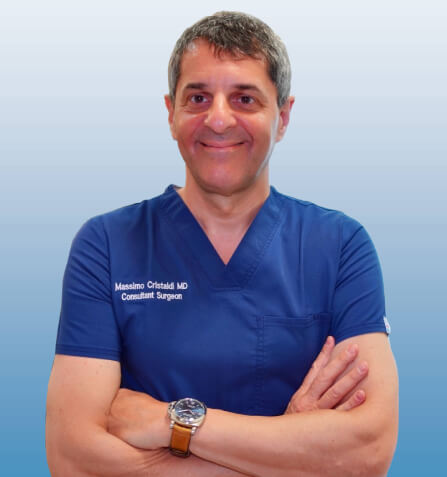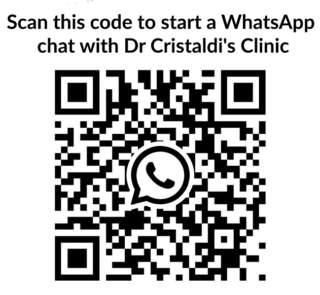PILONIDAL SINUS
The word pilonidal means a nest of hairs, and a sinus tract is an abnormal narrow channel or cavity in your body. Pilonidal sinuses are infected tracts beneath your skin that predominantly occur at the end of your tailbone, an area called the natal cleft where the buttocks separate. Although less common, a pilonidal sinus can also occur between your fingers and in your belly button and may present with more than one channel or sinus tract.
The exact cause of pilonidal sinus is unknown. It is believed that ingrown hairs combined with changing hormones (pilonidal sinuses occur after puberty), friction (sitting for a long time or from clothing), and infection (ingrown hair and friction can irritate the skin and cause inflammation leading to bacterial invasion) contribute to pilonidal sinus.
Pilonidal sinus is found more commonly in young adults and occurs most often in men as they have more body hair than women. Having a sedentary job which requires a lot of sitting, obesity, having a deep hairy natal cleft, or a family history of pilonidal sinuses can make you more prone to this condition.
- Signs and Symptoms
- Screening & Diagnosis
- Treatment
A pilonidal sinus may not have any symptoms at first or can start off as a small painless lump. Once it is infected, it becomes inflamed, fills with pus and develops into a painful cyst.
Over a few days you may experience symptoms like:
- Pain, redness, and swelling
- Blood, pus or foul smelling drainage
- Protruding hair from the cyst
- Fever (not seen in everyone)
The symptoms can be rather quick in onset once infection occurs. Pain can be severe and may be experienced whether sitting or standing. Pain can affect your ability to perform your daily activities and can worsen without treatment. Discharge of pus usually releases the pressure and eases the pain, but if the infection is not treated, it can lead to recurrence of the pilonidal sinus.
If you experience the above symptoms, you should see your doctor right away to make a diagnosis and prevent further worsening of your condition.
When you present with symptoms of a pilonidal sinus, your doctor will perform a detailed physical examination. You will be asked for your medical history, which would include information regarding any drainage or change in appearance of the affected area. Your doctor will perform a visual examination to look for tenderness, redness, swelling and inflammation around your affected area. Your doctor may also order a blood test to check for increased white blood cells, which may be an indication of an infection. In rare cases, your doctor will recommend a CT scan to confirm on your condition.
Your doctor may conduct tests to rule out other condition
Treatment may not be necessary if your pilonidal sinus does not become infected. The area can be kept clean and dry, and the surrounding hair removed by shaving or with hair removal creams. However, infected pilonidal sinuses are treated with surgery. Your doctor may perform any of the following procedures:
Incision and drainage: This procedure involves cutting open the sinus tract and draining the pus from the abscess. This is a minor procedure and is usually performed under general anesthesia. You will be able to return home either on the same day of the procedure or the day after. A dressing will be applied, and you will have to visit your doctor’s office daily for dressing changes.
For recurrent infections of your pilonidal sinus, you may be recommended to undergo surgery to remove the sinus and prevent further infections with any of the following procedures:
Excision and Reconstruction with local advancement flap: During this procedure, your surgeon will surgically remove a section of your skin along with the infected sinus. This will reduce your chances of a reinfection. Your wound will be then closed with the mobilization of a skin flap from the skin around the area where the excision to place. This is a fairly specialized form of surgery which allows nice and effective reconstruction after tissue excision in a body area where healing after these type of surgery is usually very difficult to achieve.
This procedure is fully day case and the patient does not require overnight. Despite the reconstruction involves the creation of the flap, postoperative pain is very limited and the recovery after surgery happens usually within a week.
PRE/POST OPERATIVE INSTRUCTION
The aim of this information sheet is to provide an answer the most frequently asked question about Pilonidal Sinus excision with Flap reconstruction.
Excision of pilonidal sinus aims to eradicate the presence of chronic infection is the natal cleft. Surgery to excise the next of infection is generally simple but how to reconstruct the area is the critical point. Direct suture is not generally a good choice as it usually generates excessive tension of the suture line which leads to high rate of wound breakdown causing a long delay of the wound closure sometimes also leading to chronic wound sinus which is usually interpreted as recurrence of the original disease
The principle of reconstruction the area after excision mobilizing a segment of healthy skin and sub-cuticular tissue called flap, is based on the concept of promote healing of the area without creating tension on the skin edges. This type of technique allows higher rate success after surgery, around 95% of the cases, with a quick recovery after surgery. Surgery is described in detail in the Educational Video Section of this website.
FAQs
- What to expect after the procedure?
- What activity would I be able to perform immediately after surgery?
- What are the complications of this surgery?
The procedure which generally lasts 30 it 45 minutes depending of the complexity of the case and is performed under general anesthesia. postoperative pain is in general very minimal and patients patients are able to gohome within 3 hour after surgery is completed. Medications to control postoperative pain are prescribed by the doctor and postoperative follow-up is generally scheduled after few days from the procedure. Antibiotic treatment is not required after surgery but one dose of antibiotic is given intravenously close to the start of surgery in order to prevent onset of postoperative infection. once at home the patient is allowed to lay on his back but changing position regularly. Light physical activity is allowed as well as showering. No external stitches are present so there is no need to remove any suture.It is very importnat to keep the area clead and dry. The patient at the time of discharge will receive Operation note, Discharge summary and Sick note when required.
Light physical activity can be sustained immediately after surgery and full physical activity can generally be resumed after one week. Full recovery happens usually within a week. Patients are generally able to resume work after few days although it is recommended to remain off work for one week.
Infection and partial wound breakdown are possible complications although very rare. Bleeding is also possible but as well it is a very rare complication. Dr Cristaldi has performed in excess of 300 surgeries of this type both for primary and recurrent pilonidal sinuses.



